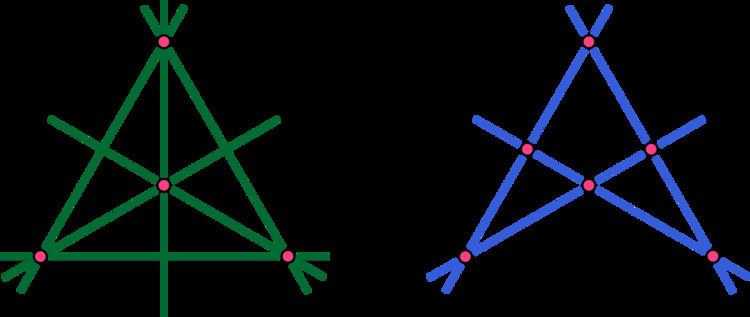 | ||
In discrete geometry, an arrangement is the decomposition of the d-dimensional linear, affine, or projective space into connected open cells of lower dimensions, induced by a finite collection of geometric objects. Sometimes these objects are of the same type, such as hyperplanes or spheres. An interest in the study of arrangements was driven by advances in computational geometry, where the arrangements were unifying structures for many problems. Advances in study of more complicated objects, such as algebraic surfaces, contributed to "real-world" applications, such as motion planning and computer vision.
Of particular interest are the arrangements of lines and arrangements of hyperplanes.
More generally, geometers have studied arrangements of other types of curves in the plane, and of other more complicated types of surface. Arrangements in complex vector spaces have also been studied; since complex lines do not partition the complex plane into multiple connected components, the combinatorics of vertices, edges, and cells does not apply to these types of space, but it is still of interest to study their symmetries and topological properties.
